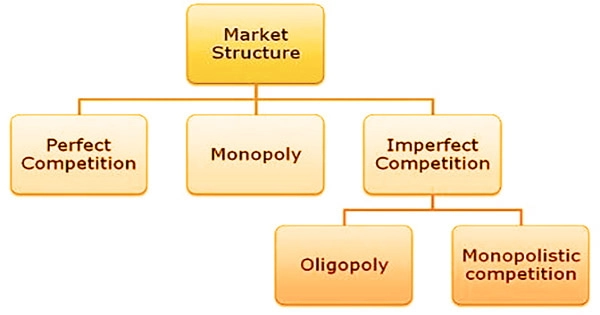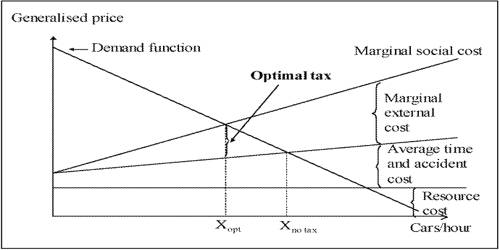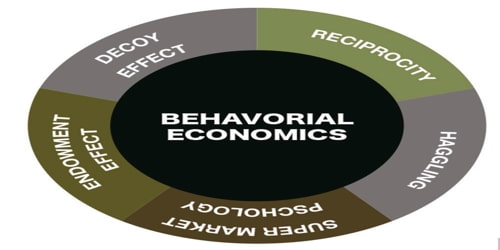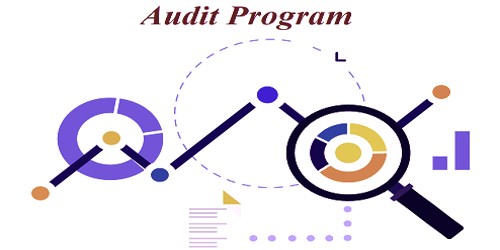Any location where buyers and sellers gather, either directly or through dealers, to complete transactions is referred to as a market. Perfect and monopolistic competitions are market structures that determine the amount of competitiveness among businesses in a given area.
In a perfect competition market, there are many competitors, barriers to entry are low, products sold are homogeneous and identical, and non-price competition is absent, whereas in a monopolistic competition market, one seller dominates and competition is zero, barriers to entry are low, products sold can have substitutes, and non-price competition is also present.
Definition of Perfect Competition –
The term “perfect competition” refers to a market situation in which a large number of sellers and purchasers are selling and purchasing similar goods and services. It is a hypothetical market setting in which competition is at its peak. There are no obstacles to entry or exit for the products and services purchased or sold in this market environment, and the pricing are nearly comparable.
In this market structure, the firms are price takers and so do not have their own pricing policy. Although it is difficult to create a market with all of the characteristics of perfect competition, the scenario can be used to better understand other market structures, such as monopolistic or oligopolistic competitions.

Definition of Monopolistic Competition –
Monopolistic competition is a market system in which there are a high number of sellers providing similar but not identical products. In monopolistic competition, a dominant seller controls prices, quality, and quantity of products or services. It occurs when only a few sellers offer a particular product, resulting in little rivalry; yet, the varieties and quality of products given by each seller differ slightly.
In a monopolistic competition, the product or service provided for sale is a close equivalent for one another. Such a market exists in the real world and has the characteristics of both monopoly and perfect competition.
Key differences between Perfect Competition and Monopolistic Competition:
Perfect Competition:
- Perfect competition is a market arrangement in which numerous suppliers sell similar commodities to customers.
- The forces of demand and supply determine the prices of products and services in perfect competition. This means that the products are sold at the same price by all of the companies in the market.
- Marginal revenue equals average revenue in Perfect Competition. Total revenue is calculated by multiplying the price per unit by the number of units sold.
- The slope of the demand curve is horizontal, which shows perfectly elastic demand.
- Perfect competition is characterized by product and service standardization. This indicates that all of the products in that market have the same features and are made using the same technology.
- The market structure in perfect competition is characterized by a high number of suppliers producing identical goods and services.
- Furthermore, ideal competition includes a big number of buyers purchasing the companies’ items.
- Perfect competition is defined as the sale of equivalent goods and services at the same price. Furthermore, because the enterprises in the industry share the costs of advertising the goods and services on offer, the selling costs are lower.
- Average revenue (AR) and marginal revenue (MR) curve coincide with each other in perfect competition.
- Any business that wants to participate and exit an ideal competition can do so with ease. This is why a perfect competition causes many enterprises to leave and enter a market defined by ideal competitions.
Monopolistic Competition:
- Monopolistic competition is a market arrangement in which there are many vendors supplying close replacement goods to the customers.
- In monopolistic competition, the firms in the market determine the prices of goods and services. Each corporation sets its own rates for its items.
- In Monopolistic Competition, a firm can only have pricing power for a short period of time because any indication of abnormal profit would invite other enterprises to enter the market.
- The demand curve under monopolistic competition is downward sloping, indicating that demand is somewhat elastic.
- The goods and services offered in monopolistic competition, on the other hand, are not standardized. The given products and services do not have identical features and are not made with the same technology.
- Monopolistic competition is defined by a large number of vendors selling close alternative goods and services to purchasers.
- In monopolistic competition, a dominating producer has a monopoly on the products produced and the price determination.
- All of the firms in the market structure create distinct products and services in monopolistic competition, which means that each firm bears the costs of selling and promoting the items. Each group is required to promote its own products or services.
- In monopolistic competition, average revenue exceeds marginal revenue, requiring the firm to cut its price in order to increase sales.
- It is difficult to enter and quit the monopolistic competition. Because there is already a dominating firm in such markets, new enterprises are hesitant to participate.
Following the discussion above, it is evident that perfect competition and monopolistic competition are distinct, with monopolistic competition having characteristics of both monopoly and perfect competition. Any analysis has no end because the differences between them may differ from one analyst to the next based on their method and aim.
Market scenarios that characterize the level of competition in a certain geographic location include perfect and monopolistic competitions. The management’s strategy and purpose may be affected by the time horizon, such as short and long term. The main distinction between the two is that firms in perfect competition are price takers, whereas firms in monopolistic competition are price creators.
















